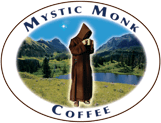Your Cart is Empty
I really love the Paradiso Blend coffee. It has a very smooth taste and I will definitely reorder!
After receiving my Mystic Monk's Coffee, I immediately brewed a cup because I was a little leary about the taste. The description noted it was sort of "fruity" tasting.
But to my surprise, it was AWESOME.
I definitely recommend it.
This is one of my husband’s and my favorite coffee! Look forward to enjoying each year! Smells so good and has a wonderful flavor.
We haven't opened the box yet! We are literally waiting for Easter Sunday for our first taste test of it! From the comments, it looks like we won't be disappointed.
I’ve really enjoyed all of your coffees, but hands down the Columbia is my favorite. It’s got a rich bold flavor, but it’s still smooth. Absolutely love this one!

